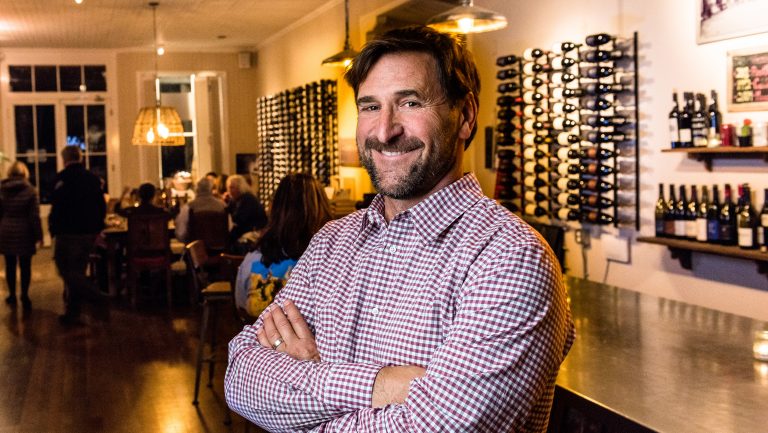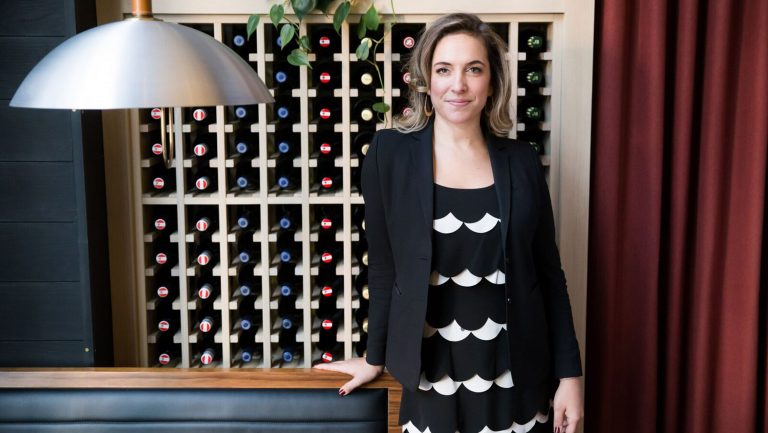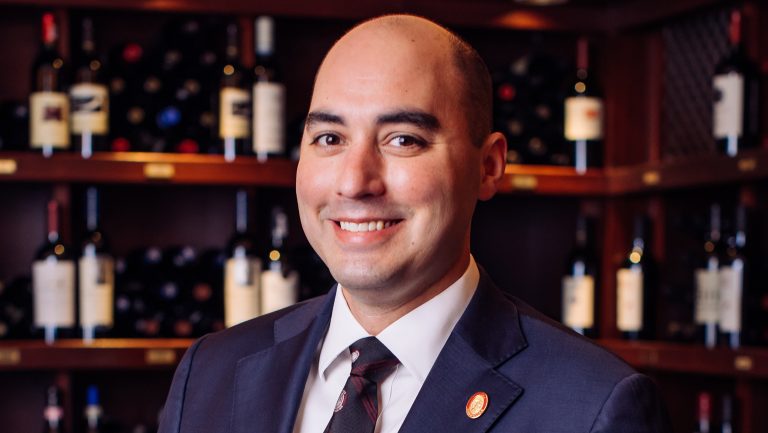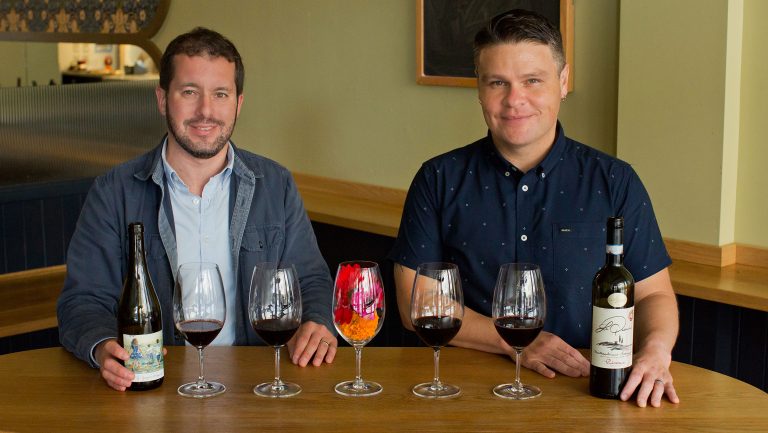After months of being closed to the public, restaurants are reopening into a precarious dining environment with an uncertain future. This presents new challenges for every aspect of the business, including the wine program, which may have seen massive changes as operators sold off inventory or pivoted to off-premise sales. And while wine is an essential revenue driver for restaurants, beverage programs are often first to experience cutbacks when budgets tighten, requiring beverage directors to do more with less.
“While the pandemic has created a lot of stress and economic hardship, it has also provided many lessons on how we can run our business more efficiently,” says Will Henry, the co-owner of Pico at the Los Alamos General Store in Los Alamos, California, which reopened at the end of May but was forced to close to indoor dining again in mid-July.
As restaurants face the possibilities of additional restrictions or closures, beverage directors are looking for ways to limit purchasing and minimize waste while maintaining a creative wine program. SevenFifty Daily spoke to sommeliers and beverage directors across the country for their strategies for success in this new landscape.

Don’t miss the latest drinks industry news and insights. Sign up for our award-winning newsletters and get insider intel, resources, and trends delivered to your inbox every week.
Budget for Best Sellers First
Allocating most of the purchasing budget to items that move quickly gives restaurants a base of reliable income and allows beverage directors to maximize their time by simply reordering successful bottles.
“I order now based solely on necessity, and no longer to purchase wines simply when I desire them,” says Elizabeth-Rose Mandalou, the beverage director and partner for WM Restaurants in Sacramento, California, which includes Allora and Woodlake Tavern. “I need to be extremely careful with spending because I don’t know what the future holds for California.” Though Allora reopened at the end of June, it was forced to close to indoor dining once again in July.
Andrea Cornwell, the beverage director for Cameron Mitchell Restaurants, which has properties in 12 states, notes that this has caused the beverage team to operate with an owner-like mentality. “We purchase only what we need to purchase and focus on our high-volume movers,” she says.
Reduce Bottle SKUs
As they try to minimize new purchasing, restaurants that didn’t deplete the majority of their inventory during shutdowns now have resources to draw from. The robust cellar at the Houston Galleria location of Pappas Bros. Steakhouse, which recently reduced its indoor dining capacity per new Texas mandates, has allowed wine director Steven McDonald, MS, to have plenty of flexibility without affecting the program’s quality or integrity. “The list will not suffer as we let a handful of things run out for a while,” he says. “The reality is we won’t be buying anything new for a very long time.”
This also offers beverage directors opportunities to hone their programs and focus on selling wines that may have been overlooked in the past. “It’s a time to re-center intentions and direction with the programs,” says Jennifer Wagoner, the wine director for Sepia and Proxi in Chicago. At Sepia, the 400-bottle list is now closer to 350 wines, and Wagoner has used the added time on the floor to interact with guests and educate them about new wines.
Selling existing inventory allows beverage directors to spend their time selling and working on the floor rather than ordering cases. “I imagine many other sommeliers will also have to take on the wearing of multiple hats until we are able to safely increase capacity back to pre-COVID levels,” says Michael Klinger, the wine director for Peppervine in Charlotte, North Carolina, which is open for indoor and outdoor dining but has not been able to bring back the team’s general manager or administrative staff yet.

Double Down On—and Streamline—By-the-Glass
Maintaining an interesting and profitable BTG program is more important than ever. “We have focused a bit more on the by-the-glass program because we are selling more glasses than full bottles than we were pre-pandemic,” says Henry. Some beverage directors are keeping the BTG list exciting by rotating in new options from the bottle list, offering more guests access to these wines. “I am trying to pull wines from the bottle list that we have a good quantity of and utilize them on the tasting menu and by-the-glass menu,” says Elizabeth Sammuri, the wine and beverage director at Flagstaff House Restaurant in Boulder, Colorado, which is currently offering limited-capacity indoor and outdoor dining.
Focusing new purchases on by-the-glass wines can also help wine directors lower per-bottle costs by taking advantage of discounts. “Distributors are more willing to offer a deeper discount if I am able to buy a 10-case drop of something I hope to offer by the glass,” says Mandalou, who depleted much of her inventory by offering it for sale by-the-glass to guests at a 50 percent discount during closures.
While they might rotate frequently, beverage directors should also consider streamlining BTG options in order to minimize waste. “We reduced our by-the-glass offerings by about 15 percent [to 22 offerings] to compensate for reduced volume and to minimize spoilage,” says Henry. McDonald has done the same at Pappas, which also allows him to focus depletions.

While Wagoner is printing fewer options on her BTG menu, she is also opening more off-menu items to hand-sell to guests. “It has proven to be working well with the guests we have had the pleasure of serving in the last few weeks,” she says.
Target Affordable Price Points
Most beverage directors interviewed have not changed the price point of their wines, but many are working to pinpoint and target the best-selling price tiers for their restaurants. For Cameron Mitchell Restaurants, that means increasing options within the entry-level and mid-priced tiers. “The guests are opting for more affordable wines currently,” says Cromwell, “so we want them to have plenty of options.”
Klinger has noticed a similar trend at Peppervine as the restaurant pivoted to a small-plate menu with dishes priced under $20. “We have been replacing expensive bottlings designed for the cellar with selections in the $40 to $80 range,” he says.
When it comes to purchasing high-end, cellar-worthy bottles, prioritize what’s rare over the widely available, says Sammuri. “At Flagstaff House, we are still taking the hard-to-get, allocated wine,” she says, “but cutting back on the others that are available all year.”
Offer Takeaway Pricing Deals
With the continued importance of to-go sales, beverage directors should consider adding a carry-out pricing tier for guests who prefer to dine at home. At Peppervine, Klinger has maintained a list of about a dozen wines with retail-level pricing, which supplements the program, rather than competes with it. “We have kept those selections on our website and are now offering our full regular menu to go,” he says. Cromwell also introduced a carry-out pricing tier, and Mandalou continues to offer 50 percent off all to-go wines.

Get Creative to Move Old Inventory
While distributors in some states accepted returned inventory from shuttered restaurants at the beginning of the pandemic, some restaurants may be sitting on out-of-date inventory; 2018 rose or Pinot Grigio, for example. The best way to move these items is to rotate them into fast-moving slots. “Especially at this time, it’s important to focus on depletions of the more time-sensitive wines,” says McDonald. “We are rotating those wines into our by-the-glass program frequently.”
If inventory is truly unfit for service, as a last resort, Sammuri recommends using it in cocktails or to make vermouths.
Take Advantage of Close Out Deals
Because on-premise purchasing largely stopped for much of the spring and early summer, beverage directors have noticed unprecedented deals from distributors. “There are things available that aren’t usually available because no one is buying,” says McDonald. “It’s crazy to see what’s on some of these close-out lists.” (This isn’t necessarily true in all markets; in Colorado, Sammuri has noticed that some SKUs are newly unavailable, perhaps because wineries and importers stopped shipping to distributors when there was a decline in demand.)
For buyers with some additional budget for purchasing, this offers an opportunity to enhance margins and offer guests enticing discounts. “Currently we are working with our distributor for a premium Napa Cabernet blend that had been popular on our bottle list at $160,” says Klinger. “We’re now featuring it as a BTG option for $25 per glass or $100 per bottle.”
Implement New Systems for Safety and Convenience
Beverage service may not see as many health and safety-minded changes as food service, but small changes can maintain strong sales while helping guests feel comfortable. The Pappas beverage team is pouring BTG wines at the service bar, rather than the table, to minimize the bottle’s contact with guests, and Sammuri and Henry are using digital wine lists which can be accessed on personal devices or sanitized tablets. Sammuri has also launched a contactless sommelier service for guests before their arrival. “Our full wine list is available online,” she says, “and they can call or email with any questions or selections. The bottle will be on their table upon arrival.”

Dispatch
Sign up for our award-winning newsletter
Don’t miss the latest drinks industry news and insights—delivered to your inbox every week.
Courtney Schiessl Magrini is the editor-in-chief for SevenFifty Daily and the Beverage Media Group publications. Based in Brooklyn, she has held sommelier positions at some of New York’s top restaurants, including Marta, Dirty French, and Terroir, and her work has appeared in Wine Enthusiast, GuildSomm, Forbes.com, VinePair, EatingWell Magazine, and more. She holds the WSET Diploma in Wines. Follow her on Instagram at @takeittocourt.







